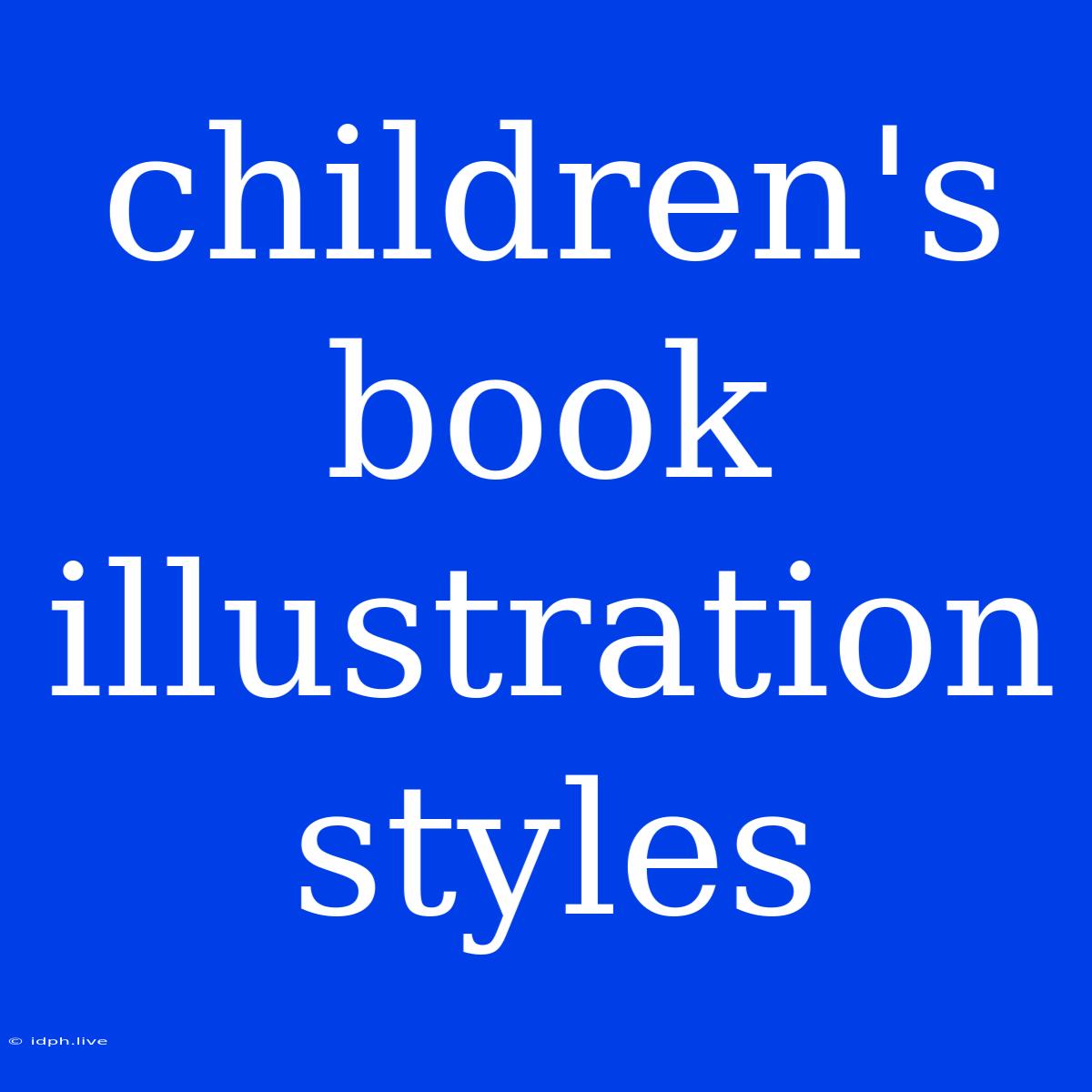A World of Wonder: Exploring Children's Book Illustration Styles
Children's book illustrations are more than just pretty pictures; they are gateways to imagination, transporting young readers to fantastical worlds and engaging their senses. These illustrations play a crucial role in captivating young minds and fostering a love of reading.
The art of children's book illustration is vast and diverse, encompassing a multitude of styles, each with its unique charm and appeal. From the classic and whimsical to the modern and abstract, there's a style for every story and every young reader. Let's explore some of the most popular and captivating styles:
1. Watercolor Illustrations
Soft, ethereal, and full of delicate washes of color, watercolor illustrations evoke a sense of dreamy wonder. This style is particularly well-suited for stories featuring nature, animals, and fantastical elements. The fluidity and transparency of watercolor allow for beautiful textures and atmospheric effects.
Examples:
- "The Very Hungry Caterpillar" by Eric Carle: Carle's iconic illustrations combine bold colors and playful cutouts, perfectly capturing the caterpillar's journey.
- "Where the Wild Things Are" by Maurice Sendak: Sendak's use of watercolor and ink creates a distinct and captivating world for Max and the wild things.
2. Digital Illustrations
With the advent of technology, digital illustrations have become increasingly popular in children's books. This style offers a wide range of possibilities, from photorealistic images to vibrant and stylized designs. Digital artists have the flexibility to experiment with color, texture, and composition, creating a visually dynamic experience.
Examples:
- "The Day You Begin" by Jacqueline Woodson: This heartwarming story is brought to life by the stunning digital illustrations of Rafael López, which depict a diverse range of children and their experiences.
- "The Wonderful Things You Will Be" by Emily Winfield Martin: Martin's digital illustrations are whimsical and full of character, capturing the magic of childhood dreams and aspirations.
3. Collage Illustrations
Combining various materials like paper, fabric, and found objects, collage illustrations create a unique and tactile aesthetic. This style adds a playful and textured element to the artwork, inviting young readers to explore the details and discover hidden elements.
Examples:
- "The Paper Bag Princess" by Robert Munsch: This humorous story features iconic collage illustrations by Michael Martchenko, showcasing a quirky and engaging style.
- "The Story of Babar" by Jean de Brunhoff: The original Babar books featured delightful collage illustrations, showcasing a unique and memorable style.
4. Line Art Illustrations
Simple yet elegant, line art illustrations focus on clean lines and striking silhouettes. This style can be minimalist or highly detailed, conveying a story through the power of shape and form. Line art is often used for stories with a classic or timeless feel.
Examples:
- "The Giving Tree" by Shel Silverstein: Silverstein's iconic line art illustrations are simple yet powerful, capturing the essence of the story's emotional depth.
- "Goodnight Moon" by Margaret Wise Brown: The soothing and familiar illustrations by Clement Hurd, characterized by their simple lines and soft colors, have become a classic for bedtime reading.
5. Graphic Novel Illustrations
Graphic novels, with their blend of words and images, offer a unique storytelling experience. Illustrations in graphic novels are often bold and dynamic, capturing the energy and action of the story. This style is increasingly popular for children's books, offering a visually compelling and engaging reading experience.
Examples:
- "The Adventures of Tintin" by Hergé: This classic comic book series features iconic graphic novel illustrations that have captivated generations of readers.
- "El Deafo" by Cece Bell: Bell's graphic novel tells a moving and humorous story about a young girl who uses a hearing aid, featuring vibrant and expressive illustrations.
Beyond the Styles
While these are just a few of the many styles of children's book illustrations, it's important to remember that art is subjective. The most important aspect is that the illustrations effectively engage young readers, stimulate their imaginations, and enhance the storytelling experience.
So the next time you pick up a children's book, take a moment to appreciate the artistry of the illustrations. They may be small, but they hold the power to open up a world of wonder for young readers.

